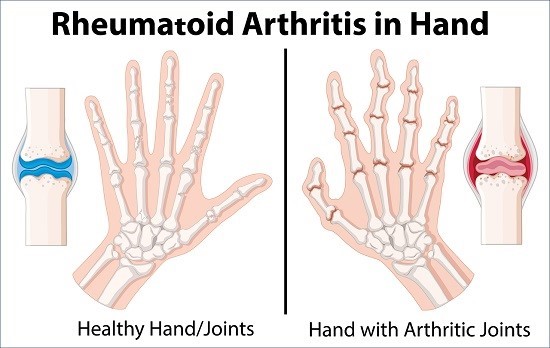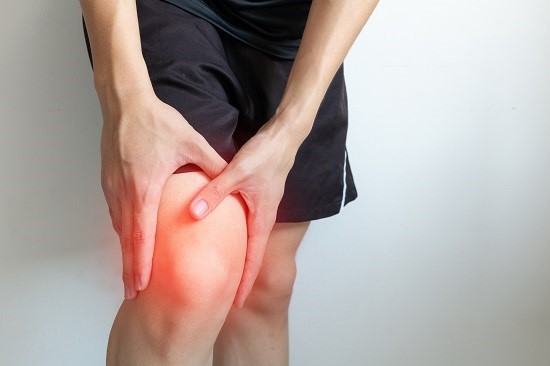Rheumatoid arthritis (RA) is a systemic autoimmune disease characterized by inflammation of the joints, particularly in the hands, wrists, elbows, shoulders, knees, and hips. So far there is no cure for the disease, but there are ways to manage the condition. Current medication may be insufficient and certain drugs used to treat can be quite expensive. As a result, non-pharmacological treatment of the disease is paramount in order to slow the progression of the disease and manage the associated symptoms.
اضافة اعلان
A study conducted in the south of Jordan found the prevalence rate in the general population to be 0.36 percent among adults; a study in the north found the prevalence rate to be 0.48 percent. Unfortunately for those living with RA, management of the
disease is poor. One study found that of the 88 percent of Jordanians with RA, 37 percent have moderate and 51 percent severe symptoms; few are able to achieve remission.
Autoimmune disorders are generally characterized by the body’s
immune system inappropriately attacking specific parts of the body. In the case of RA, the part of the body attacked are the joints, which leads to their destruction due to erosion of cartilage and bone, ultimately resulting in joint deformities. If left untreated or unproperly managed, the disease will continue to progress and may result in significant disability within 10-20 years.
 (Photo: Freepik)
(Photo: Freepik)
In terms of risk factors, RA is a multifactorial disease. Family history and genetics play a role in a person’s predisposition to the disease. Other non-modifiable risk factors include being a female (they are twice as likely to develop RA), and age, particularly those between 65 and 80. Fortunately, there are many risk factors that can be modified to reduce the possibility of developing RA.
Leading a
healthy lifestyle is important in general, but in terms of prevention and management of RA, it is particularly important. Non-smokers are at a significantly reduced risk of RA compared to those who do smoke. Young people should quit as soon as possible, as the risk is still modestly higher for the first 20-30 years after quitting when compared to lifetime nonsmokers. Additionally, a well-balanced and healthy diet is important in preventing RA, along with regular physical activity, which is defined as 150 minutes per week of moderate exercise. This plays a fundamental role in RA prevention as one of the great risk factors is obesity.
Physical fitness for those with RA
Due to the stiffness, pain, and swelling of joints associated with RA, the range of motion of the joints is significantly reduced. As a result,
physical activity is decreased or avoided in order to avoid pain or discomfort, which can lead to significant muscle atrophy and excessive weight gain. In order to combat this, it is of the utmost importance to take the required medication, which will reduce symptoms and flare-ups; during the periods of reduced pain and discomfort it is important to exercise.
Exercising with RA
The importance of physical activity for those living with RA cannot be stressed enough. Along with the other many great benefits, physical activity helps to greatly reduce bone and cartilage destruction caused by the disease. Additionally,
exercise helps maintain normal joint movement by increasing muscle flexibility and strength, as well as reduce pressure on the joints by maintaining a healthy body weight.
 (Photo: Freepik)
(Photo: Freepik)
Due to the nature of the disease, the choice of exercise is relatively limited. Before attempting any exercises, consult your doctor on which may be the most appropriate because based on the progression of the disease, certain exercises may not be recommended. Aerobic exercises (exercises that increase the heart rate or breathing rate) are the most important form of physical activity for those with RA.
Due to the flare-up of symptoms, long durations of exercise or establishing a routine may be difficult. As such, it is perfectly acceptable to divide physical activity into smaller increments throughout the day. For example, 10-15 minute bouts of exercise twice a day may be more manageable.
There are plenty of choices for aerobic activity, but they might be limited by the individual’s physical capacity. Furthermore, exercises should be limited to low-impact activities.
Walking, low-impact aerobic dances, and water exercises are some of the most common forms of physical activity recommended for those living with RA. Bicycling is another great low-impact exercise and can be done indoors, with the use of stationary bikes, just be sure to consult your doctor first as this exercise requires a greater range of motion when compared to walking.
Strength training exercises require careful supervision, physician consultation, and may need the help of a physical therapist. Those living with RA should generally avoid weight-bearing exercises. One strength training exercise that may have potential benefit is a group of exercise known as isometrics. The advantage of this exercise is that it can strengthen muscles without bending the joints. It works by flexing and
relaxing isolated muscles in an alternating fashion.
Exercises that can provide the most benefit to those with RA are a
range of motion (ROM) exercises. These help improve and maintain normal movement in joints and can help reduce stiffness. When done in the evening, they can help reduce morning stiffness. Done daily, ROM exercises improved mobility and overall quality of life in those with RA. In conjunction with ROM exercises, stretching exercises are recommended at least three days a week; each stretch should be held for roughly 30 seconds.
Consult your doctor or
physical therapist to help come up with a regimen that is right for you. When properly adhering to medication and maintaining an appropriate amount of exercise, progression of the disease can be greatly reduced and remission is entirely possible.
Read more Health








